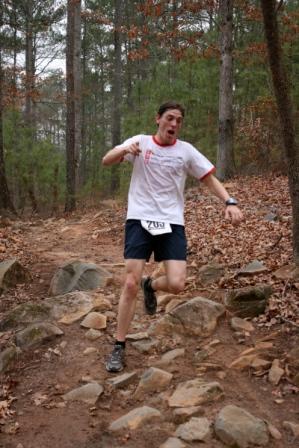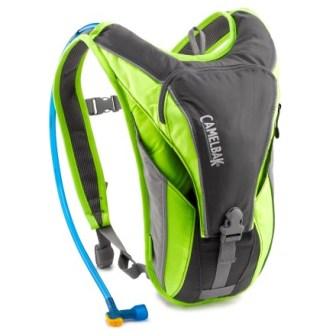I love the slop. It’s in my bloodlines. My fadda was a mudda’. My mudda was a mudda’. Whether it’s in your bloodlines or not, you still have to run through it. Here are some tips for trail running and racing in the mud:
Judge Consistency: Mud can have many different consistencies; varying from step to step. Watch where you are landing and judge how thick the mud is. A good rule of thumb: the softer the mud, the softer your step. Tread lightly on soft mud and push off harder when on more solid mud.
Balance Like An Eagle: Mud can be slippery. Make sure you maintain your balance, especially on sharp curves during a trail run. When running quickly on a muddy surface extend your elbows parallel to the ground to keep your balance, like an eagle spreading her wings. Don’t run too fast, you are not cleared for take off. The pattern is full Maverick.
Pump Your Knees: You don’t want to get stuck in the mud. Pump your knees toward your chest so you don’t get bogged down. You have too many other things bogging you down in life. The less time mud is bogging you down in a trail run the better. Unless you live in a very rural area where mud bogging is the only available entertainment. In that case, mud bog on.
Don’t Draft: If you are running a race and like to draft off of other runners you may want to reconsider when trail running in the mud. The mud sticks to the bottom of your shoes, then is thrown off with each step. Some trail running shoes hold more mud in their traction than others. Find a pair that whisks away the mud so you aren’t carrying the extra weight on your trail race. Don’t follow too closely to another runner unless you want a bunch of mud whisked in your face. On the same token, if you don’t want other runners to draft off of you then over-kick your legs at the end of your stride. They’ll fall back for sure.
On Your Tippy Toes: You want to run on the balls of your feet in the mud so you will take smaller steps. Make sure you are taking small steps especially when you pivot. Sudden pivots lead to sudden falls. Sudden falls lead to sudden mud wrestling matches. Sudden mud wrestling matches lead to…just make sure you are careful when pivoting in mud.
I hope those tips are a clear as mud (double snare, symbol crash)! I’ll be here all night ladies and gentlemen.








 Everyone has fallen or will eventually fall when running. Sorry, but it’s just math. All you can do is try to minimize the occurrences and mitigate the severity of the impact. Most of the time falls result in skinned knees or elbows but falls while running can be worse, like a sprained ankle or a broken wrist. Not to mention a busted ego. Sometimes that takes the longest to heal. It’s better than a busted face though. See. Way to stay positive.
Everyone has fallen or will eventually fall when running. Sorry, but it’s just math. All you can do is try to minimize the occurrences and mitigate the severity of the impact. Most of the time falls result in skinned knees or elbows but falls while running can be worse, like a sprained ankle or a broken wrist. Not to mention a busted ego. Sometimes that takes the longest to heal. It’s better than a busted face though. See. Way to stay positive.